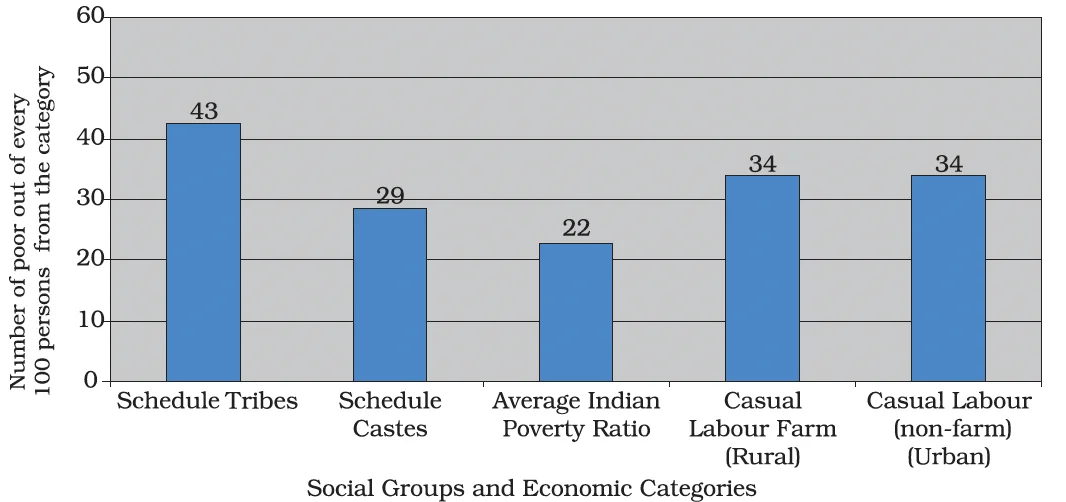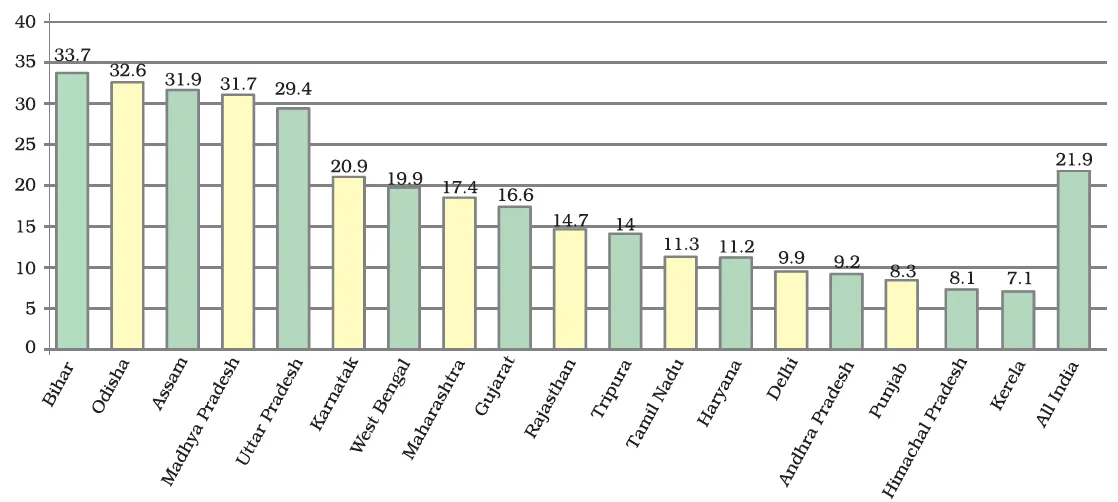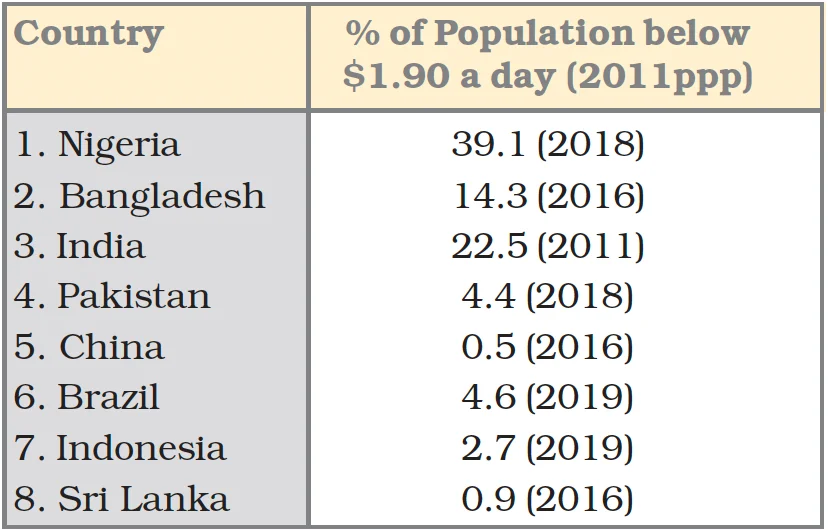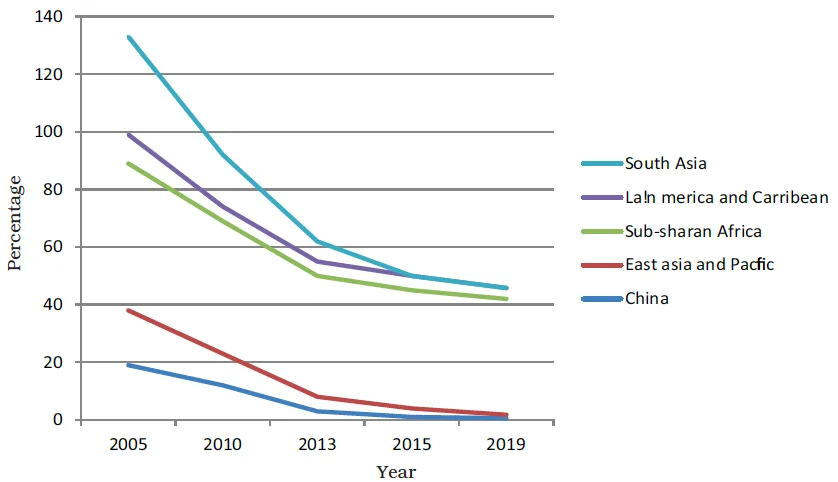![]() 4 Dec 2023
4 Dec 2023
Poverty encompasses various dimensions that extend beyond just income levels. It includes inadequate access to education, healthcare, and basic amenities. Understanding these diverse dimensions of poverty is crucial for developing effective strategies to address and alleviate poverty globally.

Poverty in India 2011–12: Most Vulnerable Groups
The data presented in this figure highlights the fact that the proportion of people below the poverty line in India varies significantly across different social groups and economic categories, revealing diverse Dimensions of Poverty (Refer Figure). Here’s a summary of the key findings:

Poverty Ratio in Selected Indian States, (As per 2011 Census)
Inter-state disparities in poverty levels are a significant issue in India. The proportion of people living in poverty varies widely from one state to another, and this reflects the diverse economic and social conditions across different regions of the country (Refer Figure).
Here are some key points related to inter-state disparities in poverty:
Efforts to alleviate poverty should take into account the Inter-state disparities in poverty and region-specific development strategies should be implemented.
Here are some key points regarding global poverty trends:

Poverty: Head Count Ratio Comparison among Some Selected Countries

Share of people living on $1.90 a day, 2005–2019

Number of poor by region ($ 1.90 per day) in millions
<div class="new-fform">
</div>
